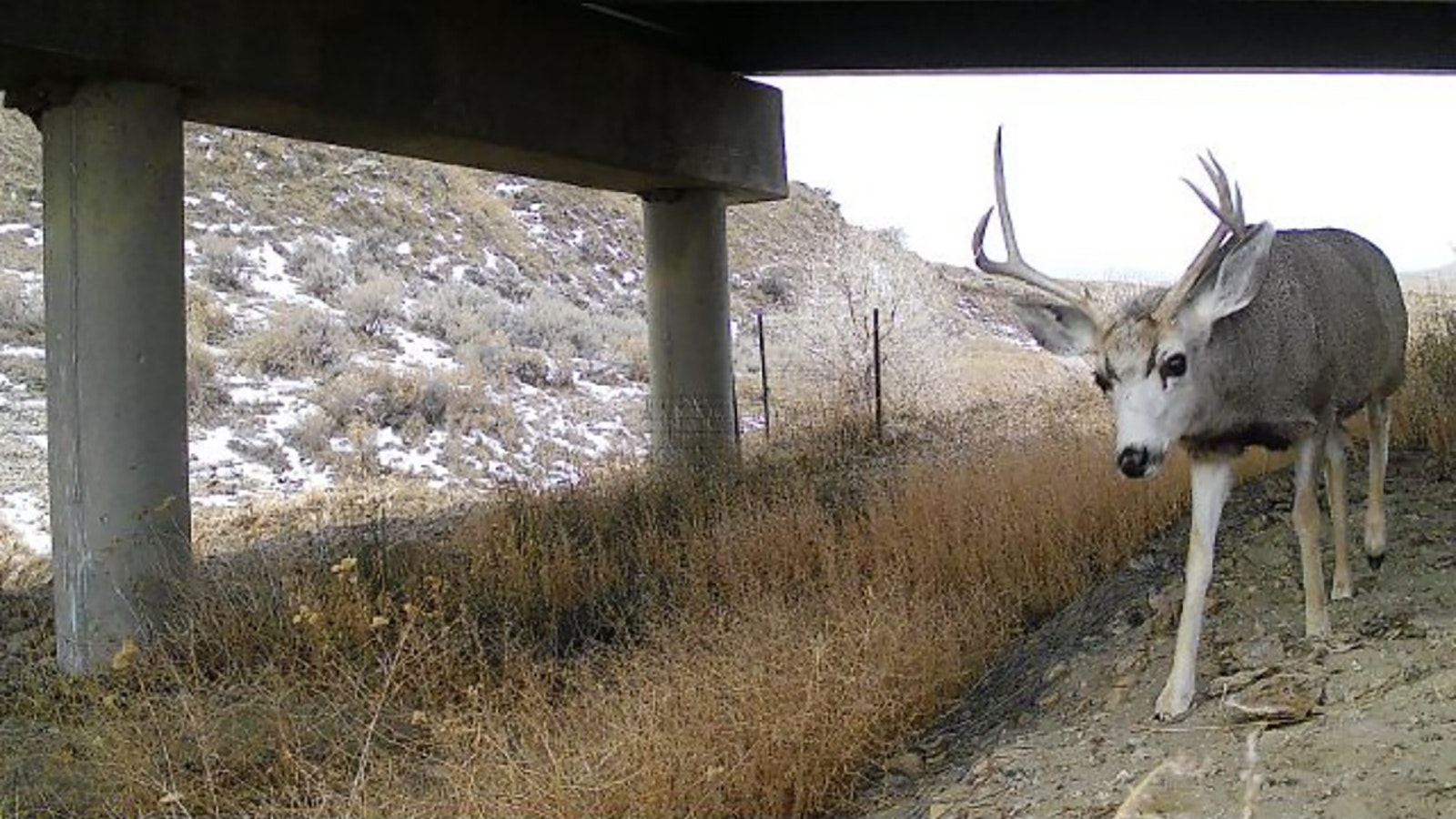A section of Interstate 25 between Kaycee and Buffalo had the unfortunate distinction of being Wyoming’s second-deadliest stretch of highway for mule deer, but a new wildlife crossing there will spare hundreds of animals a year, a wildlife conservationist said.
As many as 40 deer a month were being struck and killed along that stretch of I-25. But a wildlife crossing, which uses fencing to funnel animals toward safe underpasses, is about 60% complete and could be finished by this summer.
Mule deer, foxes and other critters are already using the underpasses, making a significant dent in the roadkill toll on that stretch of interstate, said Chris McBarnes, president of the WYldlife Fund.
“We’ve even had a pronghorn come in and utilize the underpass. That’s rare, because pronghorn generally like to be able to look up and see. They don’t like having something over their heads,” he told Cowboy State Daily.
The WYllife Fund was also instrumental in raising money for the recently-completed Dry Piney wildlife crossing project along what was Wyoming’s deadliest stretch of road for deer on Highway 189 between La Barge and Big Piney.
Existing Underpasses Used
I-25 between Kaycee and Buffalo cuts through prime habitat for the Powder River and Pumpkin Buttes mule deer herds. Deer cross the highway daily as they move back and forth between feeding, watering and bedding areas.
A few animals were already using existing “agricultural underpasses” there, McBarnes said.
Such underpasses are common along Wyoming’s highways. They were built so farmers and ranchers can move tractors, livestock and equipment between fields and pastures on either side of the road.
There were also some existing bridges and culverts that critters could use.
So, it was a matter of installing fences and other infrastructure designed to funnel the deer toward the safe passages, McBarnes said.
The WYldlife Fund launched fundraising efforts for the $4.4 million project in 2020, after the Wyoming Game and Fish Commission prioritized the Kaycee-to-Buffalo wildlife crossing.
Roughly $350,000 was raised from private donors to supplement government grants and other money.
Donations came from numerous Wyoming businesses as well as “just people on the streets of Buffalo writing checks for $100 or $500,” McBarnes said.
King Enterprises of Mills, Wyoming, started work last fall, with the bulk of the project involving building 36 miles of wildlife fencing, or 18 miles on each side of the highway.
More than 10,000 wooden fence posts were used, McBarnes said.
“And another interesting fact is that 168,000 ‘hog rings,’ which attach the fencing to the post, are being used – and they all have to be installed by hand,” he added.

Looking Ahead
Roadkill remains a serious problem for Wyoming’s wildlife. An estimated 6,000 large animals are stuck and killed every year, not to mention the danger to humans and damage to vehicles.
That means that wildlife crossings, while pricey, are worth it, McBarnes said.
“What price can you put on a human life? There’s an estimated 21 collisions with big game animals every day in Wyoming,” he said.
Fresh off fundraising for the Dry Piney and Kaycee wildlife crossings, the WYldlife fund is looking ahead to Wyoming’s next big crossing projects.
The top priorities include the Halleck Ridge crossing on Interstate 80 near Elk Mountain, where the highway cuts across major mule deer migration routes.
There’s also a series of wildlife overpasses and underpasses planned along U.S. Highway 26 between Crowheart and Dubois. Bighorn sheep, mule deer and other wildlife frequently cross the highway there, McBarnes said.
Last year, federal officials announced $350 million in funding for wildlife crossings across the country, a big chunk of which could be available for Wyoming.

Mark Heinz can be reached at mark@cowboystatedaily.com.





